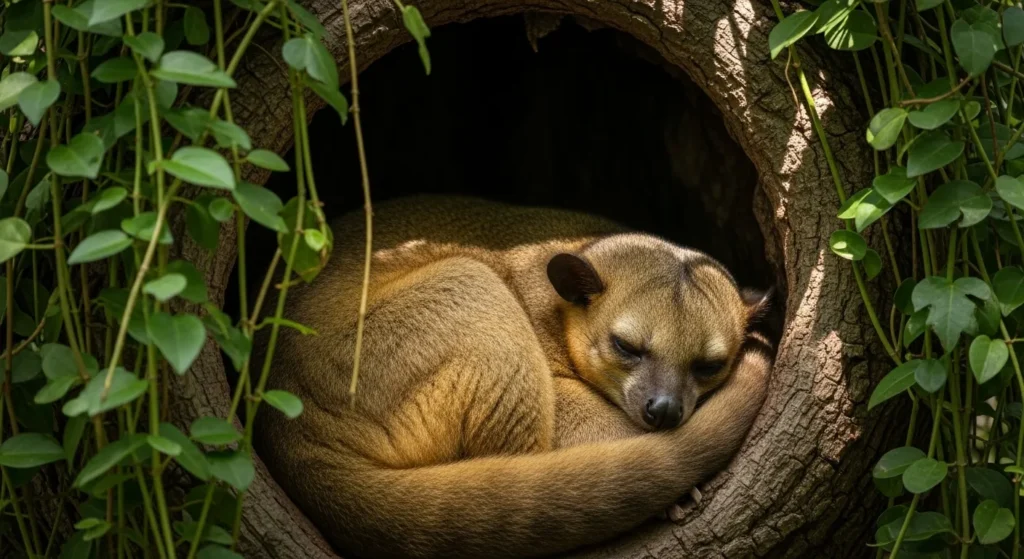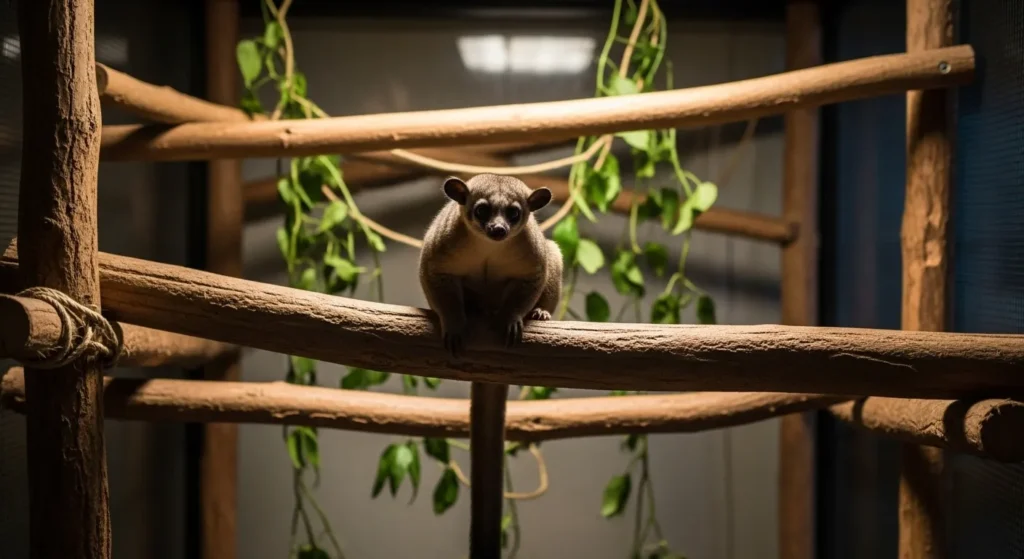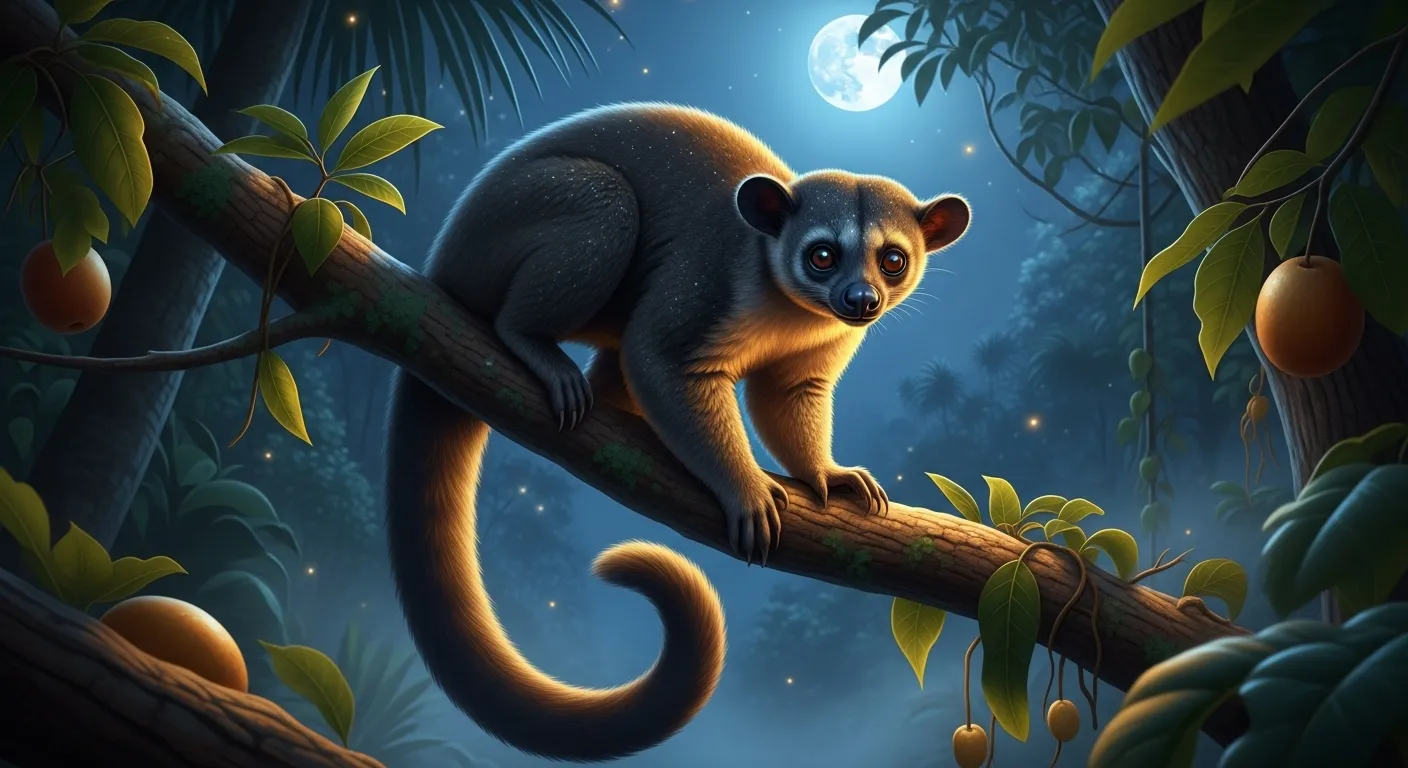Kinkajous live in the treetops of Central and South American forests. These small mammals stay hidden most of the time. They wake up when the sun goes down. This guide covers their night routines. It draws from zoo records and recent studies. You will learn why they thrive after dark. Pet owners can use this info to match their home setup.
Why Kinkajous Stick to Nighttime Living
Kinkajous avoid the day to stay safe. Bright light makes them easy targets for birds. At night, fewer threats roam the trees. Forest owls hunt them, but adults often escape. This pattern keeps their numbers steady in wild spots.
Rainforests suit their ways. Tall trees let them swing from branch to branch. Closed canopies block moonlight just enough. They rarely touch the ground. This tree life ties right into their dark hours.
- Peak hours run from 7 p.m. to midnight.
- They stir again an hour before sunrise.
- Full rest comes with daylight.
A 2024 study tracked them from 7 p.m. to nearly 6 a.m. No big changes show up in 2025 reports.
Their Daily Rest and Wake-Up Routine
Kinkajous curl up in tree holes during the day. These spots hide them from view. Some share dens with family or friends. Leaves or palm fronds add cover.
At dusk, they start to move. First comes grooming time. They clean fur and bond with others. Then they head out alone or in loose groups. No strict packs form. This setup cuts down on fights over food.
Sunrise sends them back to bed. They pick shady tangles to dodge heat. One spot might hold up to five kinkajous.

Nighttime Foraging and Eating Patterns
Dark brings out their hunger. Kinkajous hunt for fruit like figs. They lap up nectar with long tongues. Flowers and insects fill in the rest. About 90% comes from plants.
They climb headfirst down trunks to reach low spots. Prehensile tails grip branches tight. Messy meals spread pollen as they go. This helps forest plants grow.
Groups form at big fruit trees if food lasts. Otherwise, they eat solo to avoid scraps. Their steps stay slow and sure in the dim light.
For pet owners, feed at evening hours. Try fresh fruits cut small. Check our pet food safety checker for safe picks.

Sounds and Moves in the Dark
Kinkajous stay quiet most nights. Soft chirps or barks signal others nearby. They twist ankles 180 degrees for backward climbs. Big eyes catch low light well.
These tricks help them spot food and dodge falls. No color vision needed in shade. Tails act like extra hands for balance.
People rarely hear them. Thick leaves muffle steps. This keeps them safe from ground hunters.
Challenges for Kinkajou Pet Owners
Home life flips their clock. Kinkajous wake you with play or noise. Cages need tall branches for swings. Dark corners mimic wild dens.
Feed and play after sunset. Day naps stay key. Vets note stress from wrong light cycles.
Link to our pet symptom checker if night habits change. Watch for odd sleep signs.
Many skip them as pets. Local rules vary. Check laws first.

How Kinkajou Habits Compare to Cats
Kinkajous share night vibes with cats. Both hunt after dark. Cats roam less high up, though.
Read more in our post on are cats nocturnal?. It covers sleep cycles side by side.
For wild facts, see the San Diego Zoo kinkajou page.
Kinkajous remind us of forest rhythms. Match their needs for happy lives. Got a kinkajou? Share tips below.
